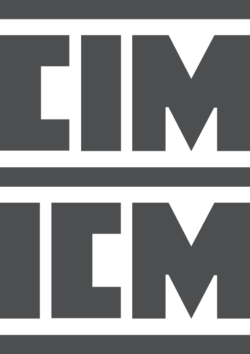Canadian Institute of Mining, Metallurgy and Petroleum
The Canadian Institute of Mining, Metallurgy and Petroleum (CIM) is a not-for-profit technical society of professionals in the Canadian minerals, metals, materials and energy industries. CIM's members are convened from industry, academia and government.
 | |
| Founded | March 1898 |
|---|---|
| Dissolved | · |
| Type | Professional Organization |
| Location | |
Area served | Worldwide |
| Method | Mining, Conferences, Publications, Training |
Members | 11,000+ |
| Owner | · |
Key people | Janice Zinck, President Angela Hamlyn CEO |
Revenue | · |
| Endowment | · |
Employees | 30 |
Volunteers | · |
| Website | www.cim.org |
| · | |
History
In March 1898, the Canadian Mining Institute was founded in Montreal at the second annual meeting of the Federated Canadian Mining Institute, which was dissolved. The Institute was incorporated by an Act of Parliament to include all former provincial groups except The Mining Society of Nova Scotia, which remained a separate body.
In 1902, The Institute formed its first Branches in Sherbrooke, Quebec, Kingston, Ontario, and Nelson, British Columbia. In 1918, the Mining Society of Nova Scotia formally became affiliated with the Canadian Mining Institute.
In 1920, Metallurgy was added to the name to recognize the inclusion of this discipline.
In 1942, the Institute made CIM its official abbreviation.
In 1990, "Canadian Institute of Mining, Metallurgy and Petroleum" became the official name of the Institute by an Act of Parliament.
In 1996, CIM published its Guidelines for the Estimation, Classification and Reporting of Resources and Reserves. This document became an integral part of National Instrument 43-101 (NI 43-101), the set of rules for reporting and displaying information from mineral properties owned by companies listed on Canadian exchanges that came into effect on Feb. 1, 2001.[1]
1998 was CIM's Centennial Year. A book entitled "Pride and Vision" by E. Tina Crossfield was published in commemoration of the event.[2]
In 2018, CIM celebrated its 120th anniversary. It also launched a new a completely redesigned site for all of its Standards, Best Practices & Guidance for Mineral Resources & Mineral Reserves materials, including the 2014 update of CIM Definition Standards.[3]
Publications
- CIM Magazine, a mineral industry publication for information on technology and operations, published 8 times a year
- CIM Journal, quarterly digital publication for peer-reviewed technical papers. Papers cover all facets of the mining and minerals industry, including geology, mining, processing, maintenance, environmental protection and reclamation, mineral economics and project management. CIM Journal publishes papers in either English or French, with abstracts provided in both languages.
- Canadian Metallurgical Quarterly, the CMQ provides a forum for the discussion and the presentation of both basic and applied research developments in the area of metallurgy and materials
- Exploration and Mining Geology Journal, the Geological Society's own quarterly journal for the publication of Canadian and international papers on applied aspects of mineral exploration and exploitation. (As of 2013, this journal is no longer being published.) See https://www.cim.org/en/Societies-and-Branches/Societies/Geological-Society/Exploration-and-Mining-Geology-Journal.aspx
- Various books, covering topics from all facets of the mining, minerals and materials industries.[4]
Branches
CIM Branches are organized geographically within three Districts (Western, Central and Eastern) across Canada to address the local needs of members. They discuss regional issues concerning the industry and undertake CIM’s mission at a local level.[5]
Canadian Branches by District
Western District
- Calgary
- Crowsnest
- Edmonton
- North Central BC
- Oil Sands
- Saskatoon
- Saskatoon GeoSection
- South Central BC
- Vancouver
Central District
- GTA West
- Hamilton
- Northern Gateway
- Ottawa
- Porcupine
- Red Lake
- Sudbury
- Sudbury
- GeoSection
- Thunder Bay
- Toronto
Eastern District
- Amos
- Chapais-Chibougamau
- Montréal
- New Brunswick
- Newfoundland and Labrador
- Québec
- Rouyn-Noranda
- Saguenay
- Thetford Mines
- Val d'Or
International
- Lima-Peru
Technical Societies
CIM’s 10 technical societies strive to promote the development of the many facets of Canada’s minerals, metals, materials and petroleum industries. Technically driven, they come together to discuss issues of concern in their specific field pertaining to the discovery, production and utilization of resources.[6]
Canadian Mineral Processors Society
Environmental and Social Responsibility Society
Maintenance, Engineering and Reliability Society
Management & Economics Society
Awards of Excellence
The institute bestows several awards annually to individuals for their outstanding achievements and contributions to their respective fields and to the mining and minerals industries in general.
Branch and Society Awards
- CIM District Distinguished Service Medal
- Barlow Medal for Best Geological Paper
- Julian Boldy Memorial Award
- Robert Elver Mineral Economics Award
- McParland Memorial Award for Excellence in Maintenance, Engineering and Reliability
- Mining Engineering for Outstanding Achievement Award
- Mel W. Bartley Outstanding Branch Award
Early Career Awards
Exploration Awards
Sustainability Awards
- Award for Excellence in Sustainable Development
- TSM Community Engagement Excellence Award
- TSM Environmental Excellence Award
Safety Awards
- Hatch-CIM Mining & Minerals Project Development Safety Award
- John T. Ryan Safety Trophies
- Mining Safety Leadership Medal Award
Career Excellence Awards
- CIM Fellowship
- CIM Distinguished Service Medal
- Selwyn G. Blaylock Medal
- Vale Medal for Meritorious Contributions to Mining
Social Responsibility and Education Awards
External links
References
- See http://magazine.cim.org/en/cim-120/standard-bearers-en/
- Crossfield, E. Tina (1998). Pride and Vision. Montreal: Canadian Institute of Mining, Metallurgy and Petroleum. ISBN 978-0-919086-98-2.
- See https://mrmr.cim.org/
- See https://store.cim.org/en/books
- See https://www.cim.org/en/Societies-and-Branches/Branches
- See https://www.cim.org/en/Societies-and-Branches/Societies